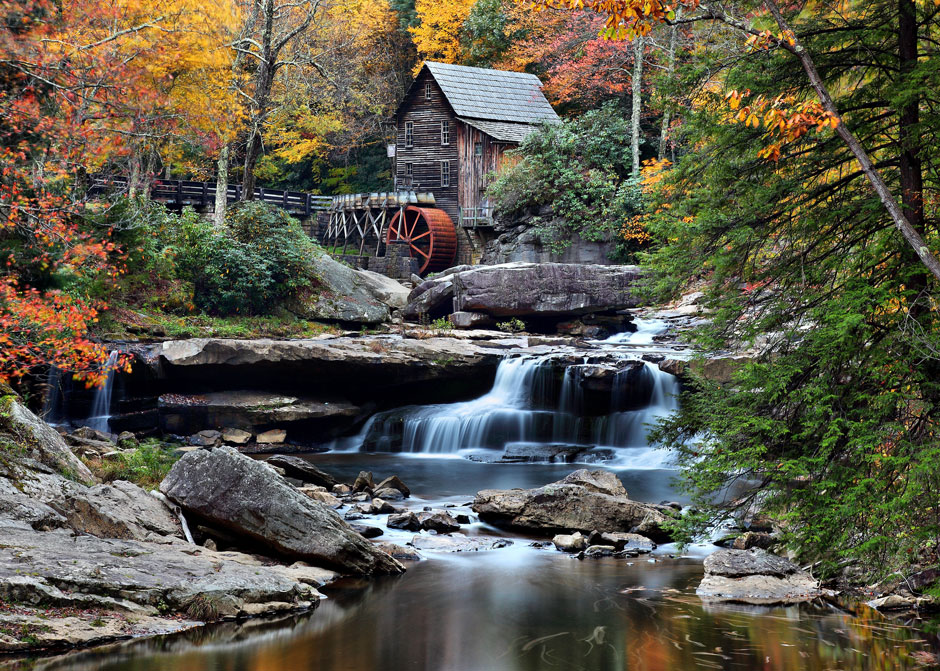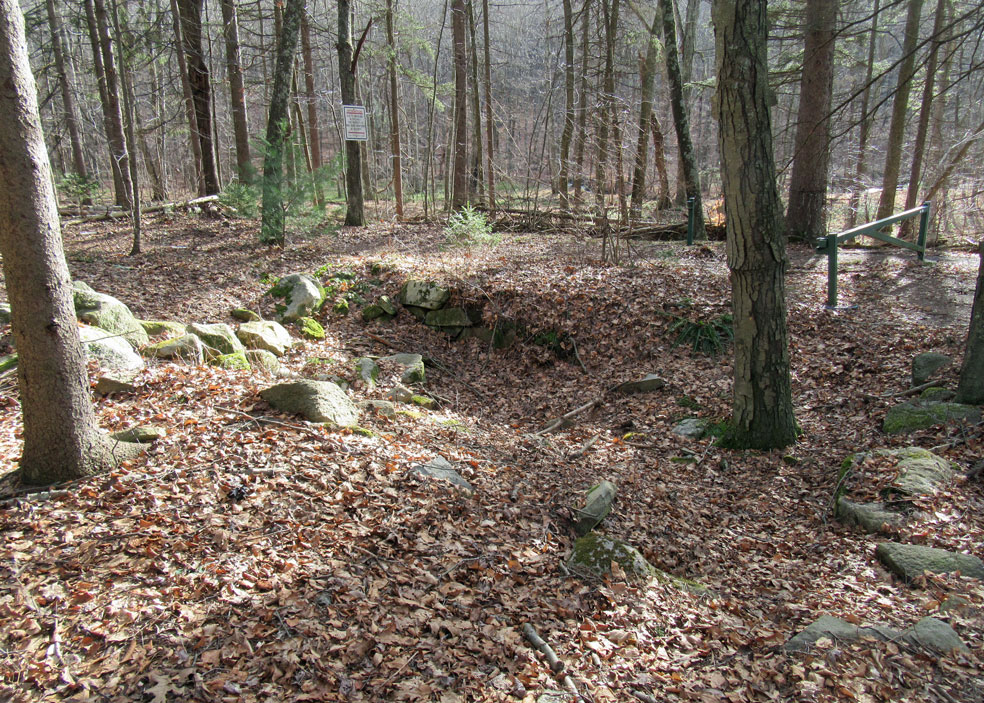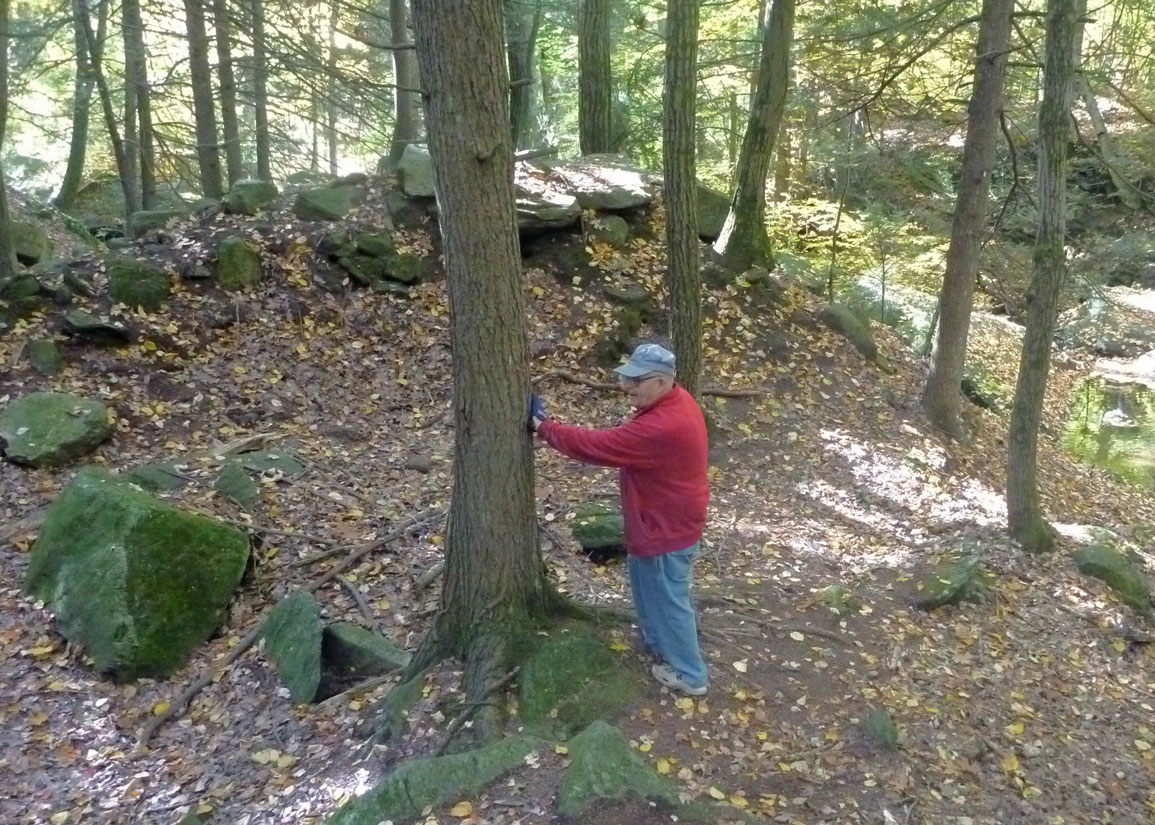 |
| Home | Geography | History | Biology | Recreation | News | Resources |
| Allis Family | Allis Home | Allis Gravestone |
The Allis Mills
The discovery of one of Vernon's lost mills is always exciting; a piece of our history long forgotten has been returned to us. Our cotton mills are well documented, but the everyday saw and grist mills used by the early settlers and farmers are sometimes overlooked. The Allis Mills, including probably our first grist mill, is mentioned in none of Vernon's history books. Most of the information that we find on these mills is found in Bolton town deeds and family wills. David Allis was born in 1720, the year the town of Bolton was created by the Colonial Court. His father Nathaniel was one of Bolton's earliest settlers with a farm on the Coventry line just north of today's Bolton-Vernon border. In 1743 the town laid out a 20-acre lot for mills at the corner of today's Reservoir and Fish & Game Roads on the Tankerhoosen River. When David married he bought property next to the mill site on the west side of Reservoir Road near today's Baker Road. Here he built his house, farm and raised his family. About the same time David built first a saw mill and then a grist mill just south of today's Fish and Game Road. Although there were other sawmills, including the John's saw mill at Valley Falls, this seems to have been the first grist mill in this part of town. When David Allis built his mills there was no Walker Reservoir or Walker's Mill upstream. The Tankaroosen Brook, as it was known then, tumbled down from Tolland into the relatively flat area of today's Belding Wildlife Management Area.
The place Allis chose for his mills is a challenging location in a difficult to access gorge off Reservoir Road. It has been over 200 years since the mills were in use and nothing else has been built at that location so the land has returned to forest. Still you can see stone walls, where dams and perhaps the mills were located. David owned the 20-acre site of the mill in 1743, a year before he bought the site for his house and farm, so he seems to have been planning the mill for some time. He was then in his early 20's, but would have had the support of his father and brothers. No record, sketch or description of these mills was found to exist, but they were likely typical of their times. Reading the land today there seems to have been a side lane off Reservoir Road leading down to probably the second floor of the grist mill. This side of the brook is very steep so the milling wheel would have been above brook level. In an agricultural community there were few opportunities to earn hard cash so that a miller, who might trade for his services, could sell excess flour in Hartford. Thus David was probably one of the wealthiest men in North Bolton. He was very active and influential in town and church affairs accumulating a great deal of land. » Read more about the Allis family. Grist mills were a place where farmers gathered to exchange news and gossip while their grain was being converted to flour. Next to the meeting house it was the most important site in an early New England town. During the Revolutionary War the Allis Grist Mill was a designated site for posting information. Shortly after the mills were built in the mid 1740's Bolton improved roads in the area constructing Baker Road to connect with the center of town.
David had seven daughters, so there were no sons to help with milling or to inherit his mills. He did have employees working for him, including his relatives, and built a tenant house next to the mills for them to live in. There is an interesting addition to his probate papers about a grandson who likely helped with the farm and mill, "We the subscribers are able to testify that we heard Mr. David Allis, late of Bolton deceased, who died intestate, say in the time of his last sickness, that it was his intention and will, that his grandson, David Allis Hodge, who has lived with him for some years past, and is now in the sixteenth year of his age should after his decease, have all his wearing apparel." As he neared the end of his life the future of his mills seems to have weighed on him. In January 1787 he placed an ad in the Hartford Courant offering the Grist and Saw mills for sale as well as his house, barn, fields and orchard. Apparently there was no interest from buyers so in December 1788 David signed a lease with Samuel Bishop giving Bishop a 3-year use of the grist and saw mill as well as the tenant house. The lease was to begin on May 1, 1789. Then David died on April 27, 1789 without a will suggesting his death may have been sudden. He left seven daughters and his second wife. The Mills After David's Death
David died without a will so the Probate Court appointed members of the family as Administrators to divide his assets. Six of his daughters were married and most lived outside Bolton. The saw and grist mill were left to different heirs and over the next few years were sold a number of times. By the 1790's bigger and better located mills were appearing further down the river. When David built his mills in the 1740's our boundary with East Windsor was just west of Vernon Center. In 1788, the year before David's death, a mile and a half was added to the west of the early line that would include the location of the Phoenix, Dobson and Talcott mills. The Allis heirs weren't interested in running the mills and the new owners obtained mortgages to buy them and often were disappointed in the results. In 1804 the young and ambitious Francis McLean bought the property and mill privileges. In his memoirs he says, "About 1805 or 1806 I built a grist mill, saw mill and dam over by Erastus Hunt's. After a few years, as it did not do well there, I moved the grist mill to Phoenix Village, and there built a dam and saw mill." Deeds indicate he purchased the existing mills so perhaps he was just updating and modernizing them. In 1808, the year Vernon separated from Bolton, McLean sold the property to Ezekiel Baker who was accumulating much of what is today's Tankerhoosen Wildlife Management Area. When Baker died in 1842 he left everything to Frederick Walker who would build Walker Reservoir and his own mill on Fish & Game Road. For the past 200 years there has been no activity on the old Allis' mill site returning it to its natural state. Only a few walls and perhaps race remnants leave any witness to what was once an important mill where farmers brought their grain, met neighbors and shared the news.
Discovering the Allis MillsThe Allis Mills are not mentioned in any of Vernon or Bolton's history books. They were truly one of our lost mills. We stumbled on their existence by accident. Talking with Tom Mason in the Fall of 2016 about the Tankerhoosen Wildlife Management Area, which was formerly owned by the Bissell-Mason family, he mentioned that as a boy he played on very old mill remains on the Tankerhoosen River south of Fish & Game Road. We were aware of Walker's mills on the north side of Fish & Game Road, but had read nothing about other mills at that location. Early maps show only Walker's mills.
Walking the area with Dick Symonds, Jr, who was researching the area for a book, we saw evidence of ancient dams and perhaps head races, but little else remained. A series of land deeds loaned by Tom Mason from the early 1800's made no mention of these early dams either. If they did exist they must have been from the 1700's and all record of them and their owners lost. When Symonds published his "Water Powered Mill Sites in Vernon, Connecticut" in November 2016 he didn't mention this site as it hadn't been confirmed. The first written evidence of mills at this site was also found by accident. While at the Connecticut Historical Society researching the Kellogg Family two articles by Allyn Stanley Kellogg published in the Rockville Journal in 1889 on Rockville's Iron Works were found. Allyn S. Kellogg was the great grandson of Rev. Ebenezer Kellogg, our first minister, and might be considered Vernon's first historian as his writings provide the basis for our knowledge of our first meeting house and the establishment of the North Bolton Congregational Church. From his article, 'About The Ore For The Iron Works' he includes the following paragraph: "David Allis owned land in the eastern part of the town, on Tankerooson brook, and had there, . . . a saw mill and grist mill, a short distance south of where Walkers's mill now stands. The piece of land laid out in 1743 was bounded on the west by ‘the highway leading to the Iron Works.'" Now we had a name and date so began searching Bolton land deeds and family wills where we found frequent reference and some detail on the Allis Mills. Another mystery solved. SourcesAllis, David Allis, East Windsor Probate District, 1789, No. 208. File is online at CT State Library. Kellogg, Allyn S. (1889). About the Ore For the Iron Works. An article published in the November 21, 1889 Rockville Journal. McLean Hardy, Mary. Notebook. Notes on McLean family history by Francis daughter. It includes a memoir of Francis' life recorded before his death in 1861. Notebook is at the CT State Library. Symonds, Jr., Richard N. (2016). Water Powered Mill Sites in Vernon, Connecticut. 46 pages. Updated February 2019 | ||
Home | Activities | News | References | Search | Site Map | Contact Us © Copyright The Tankerhoosen. All rights reserved. |







